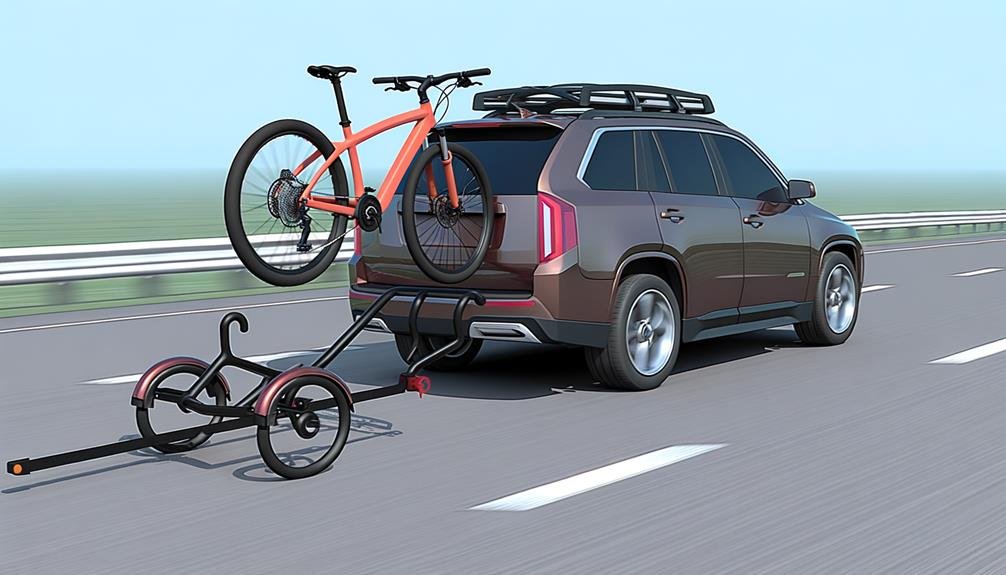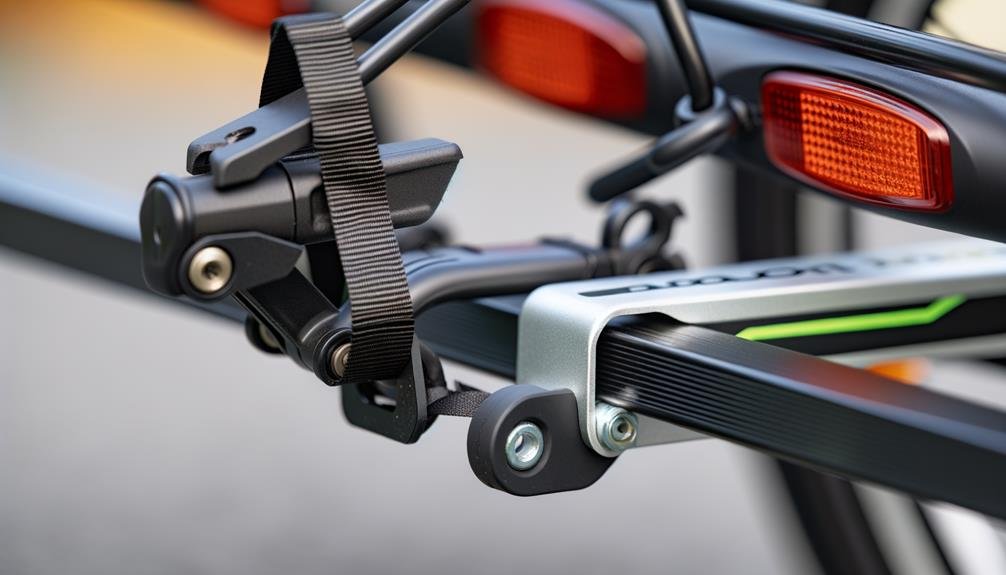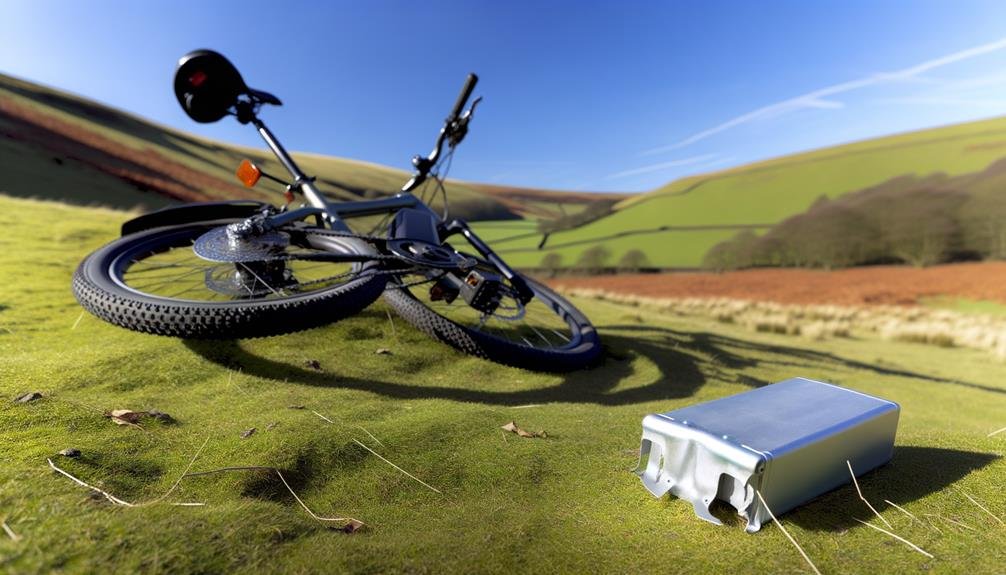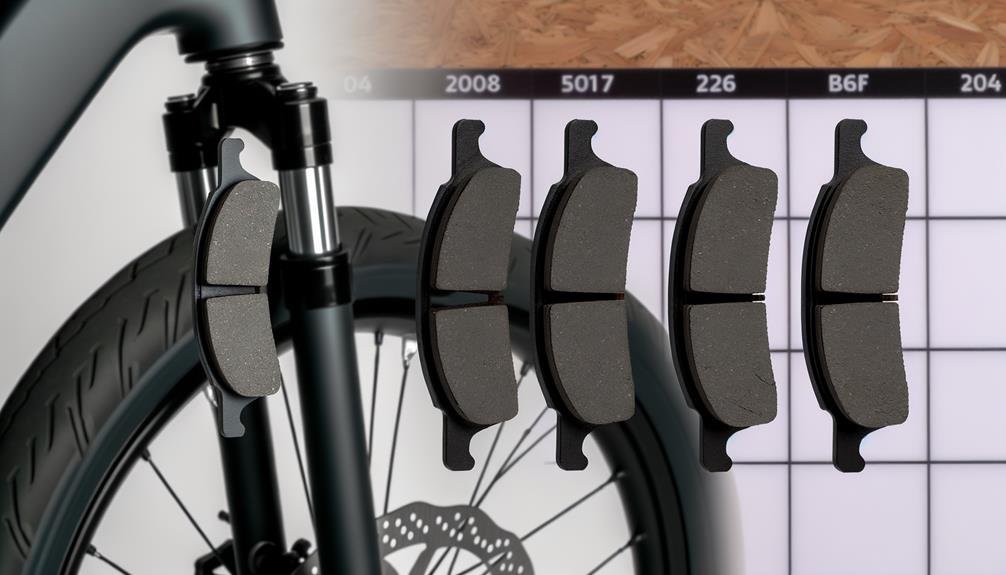Charles Miller is a veteran bike enthusiast with over 12 years of experience dealing with bikes as a mechanic. Despite immense love and expertise for...
Throwing caution to the wind, we might jump to the conclusion that using a regular bike rack for an eBike is no big deal. However, it's not as simple as it seems.
The added weight and often unconventional shape of eBikes compared to regular bikes raise a few eyebrows. It's a question of safety, compatibility, and also legal restrictions in some areas.
So, stick around, because this isn't just about hanging your eBike on a rack; it's about making sure it stays there while you're cruising down the highway.
Key Takeaways
- Ebikes weigh significantly more than traditional bicycles due to their motor and battery components, so it is important to check the weight limit of your chosen bike rack.
- Regular bike racks may not have the maximum weight capacity to support ebikes, so it is crucial to check the weight rating of the rack to avoid damage or accidents.
- When transporting ebikes on highways, additional security measures such as using straps or bungee cords and securely fastening the bike to the rack should be taken to prevent dislodging during travel.
- Hitch racks are the most suitable bike rack type for ebikes, as they are heavy-duty, have higher weight capacity, and provide added security and durability.
Understanding Ebike Weight Considerations
When considering a bike rack for your e-bike, it's crucial to understand the weight considerations involved, ensuring the rack can support your e-bike's weight, typically within the 50 to 60 pounds range. eBikes weigh significantly more than traditional bicycles due to their motor and battery components. It's a common understanding that e-bikes are heavier, often leading to the need for specialized racks.
A regular bike rack mightn't have the maximum weight capacity necessary to support the extra weight of these heavy eBikes. Therefore, it's important to check the weight limit of your chosen bike rack. A useful tip could be removing the battery from your e-bike before transporting it, significantly reducing the weight of an ebike.
Being part of our community means knowing your gear. So, remember to also consider your e-bike's compatibility with the rack in terms of size and shape. Ensure you're properly securing your e-bike with straps or fasteners to prevent any accidents during transportation.
Ultimately, understanding these weight considerations will help us all make informed decisions on the best way to transport our e-bikes. Let's continue our journey of discovering the possibilities and overcoming the challenges of e-bike transportation together.
Assessing Regular Bike Rack Safety
In assessing the safety of regular bike racks for e-bikes, we must consider several key factors such as the rack's weight capacity, the correct use of fasteners, and the overall suitability for high-speed transportation. Due to their batteries and motors, eBikes are typically heavier than regular bikes. This means that not all regular bike racks can safely and securely hold an eBike.
To avoid damage to the bike or potential accidents, it's crucial to check whether a regular bike rack is rated for the weight of the eBike. If the eBike and its accessories exceed the weight capacity of the rack, it could put undue stress on the rack and damage the bike or the vehicle.
Apart from weight, high-speed e-bike transportation presents its own set of challenges. Assessing regular bike rack safety includes ensuring the eBike is securely fastened to the rack, especially during high-speed travel.
| Key Considerations | Importance |
|---|---|
| Rack's Weight Capacity | Can the rack support the heavier eBike? |
| Secure Fastening | Is the eBike safely and securely fastened to prevent damage during transportation? |
| High-Speed Suitability | Is the rack sturdy and secure enough for high-speed e-bike transportation? |
Highway Transportation of Ebikes

Building on our earlier discussion on rack safety, let's now explore the specific considerations for highway transportation of eBikes.
Just like a regular bike, an eBike can be transported on a car rack, be it a roof rack, hitch rack or trunk rack. However, due to their heftier weight, special attention must be given to the weight capacity of the bike racks.
When considering a regular bike rack for an eBike, it's key to verify the rack's weight rating. Most electric bikes are heavier than traditional bikes, mainly due to the battery. A simple solution to lighten the load is to remove the battery before mounting the eBike on the rack.
Furthermore, highway transportation of eBikes requires additional security measures. We recommend using straps or bungee cords to secure the eBike firmly to the rack. This is crucial to ensure the bike isn't dislodged during travel, especially at highway speeds.
Exploring Suitable Bike Rack Types
Let's dive into the world of bike racks, focusing on those that are best suited for transporting eBikes, keeping in mind their unique size, shape and weight considerations.
The average weight of an eBike is heavier than that of a regular bike, so it's critical to pay attention to the rack system's weight capacity.
- Hitch Racks: These are heavy-duty and can accommodate eBikes comfortably. Ensure to invest in straps or bungee cords for extra security, as they can handle the weight and size of heavy bikes better than other rack types.
- Platform Racks: These car racks are designed for easy loading and unloading. They keep the bike secure and are perfect for eBikes, preventing any potential damage during transit.
- Regular Bike Racks: With extra precautions, these can be used to transport eBikes on highways. Ensure the rack is from a reputable brand, and use ties or fasteners for secure attachment.
Hitch Bike Rack: A Closer Look

Shifting our focus to hitch racks, it's vital to understand their weight capacity, compatibility with eBikes, and added security features, making them a reliable option for eBike transportation. Unlike a regular bike rack, a hitch bike rack is designed to carry heavier loads, making it a suitable choice for eBikes.
To give you a clearer perspective, let's have a closer look at the advantages and considerations of using hitch racks for eBikes.
| Advantages | Considerations |
|---|---|
| Higher weight capacity | Ensure hitch mount can support one eBike's weight |
| Compatible with most bike types | Check compatibility of hitch with eBike |
| Provides added security | Use straps or cords for secure transportation |
| Durable and robust | Invest in quality brands for long-lasting use |
Hitch-mounted racks can carry your bike securely, making them a popular choice amongst eBike users. However, it's crucial to consider the specific compatibility and weight restrictions of these types of racks. Securing your eBike properly on a hitch rack, especially when driving on highways, will guarantee a safe and pleasant journey with your eBike.
Frequently Asked Questions
Do E-Bikes Need a Special Bike Rack?
We don't necessarily need a special rack for e-bikes. However, considerations for rack durability, weight, compatibility, e-bike dimensions, mounting techniques, and safety precautions are crucial to ensure secure, hitch or roof e-bike transportation.
Can You Put Ebike on Bike Rack?
Yes, we can put an ebike on a regular bike rack. However, we must consider ebike weight issues, rack durability, and carrying capacity. Also, proper rack installation and securing the ebike are essential for safety.
Which Bike Rack Is Best for E-Bikes?
We'd recommend hitch mounts and platform racks for their durability, ease of installation, and secure attachment. These accommodate the weight of e-bikes well, while offering great bike protection and accessibility. Always check rack capacity though!
Can a Thule Bike Rack Carry an Electric Bike?
Yes, we can use a Thule bike rack for an e-bike. They're durable, have sufficient rack capacity, and are easily adjustable. However, we might need to check e-bike compatibility and consider protective measures for stability.
Conclusion
So there you have it, folks! Just like Goldilocks in her pursuit of the perfect porridge, we've sifted through the details to find the 'just right' answer.
Sure, a regular bike rack can handle an e-bike, but with caution. Always remember to consider weight restrictions, remove the battery when possible, and secure it tightly.
Like a well-fitted Cinderella slipper, the right rack will provide a secure and safe transport for your e-bike.
Keep researching, stay safe, and happy cycling!

Charles Miller is a veteran bike enthusiast with over 12 years of experience dealing with bikes as a mechanic. Despite immense love and expertise for his Tacoma, he rides his Trek Ebike more. Anytime you meet him, you’ll either hear him talking about Bikes, or writing about all things bikes and cars on this blog.
More Posts


